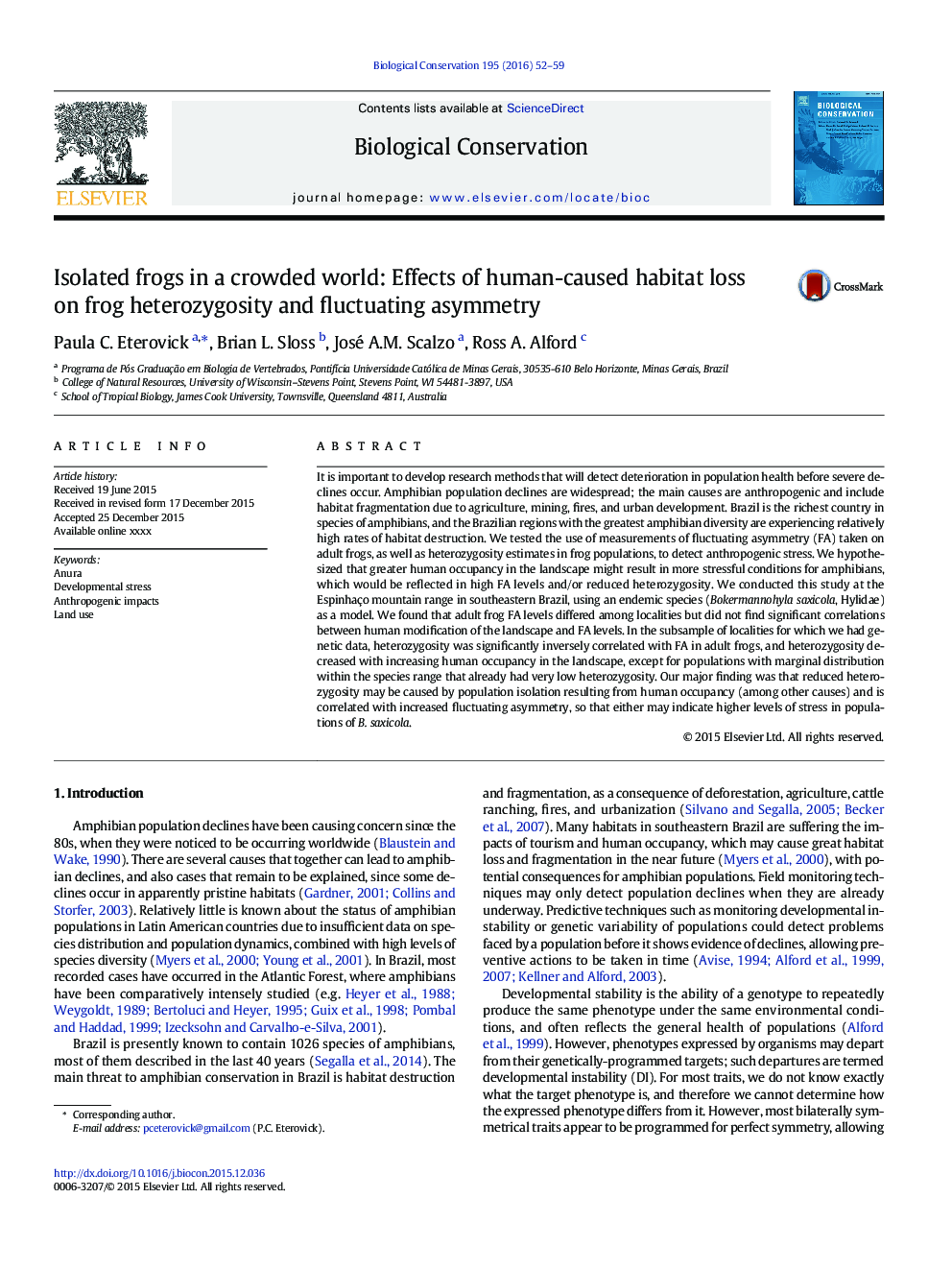| کد مقاله | کد نشریه | سال انتشار | مقاله انگلیسی | نسخه تمام متن |
|---|---|---|---|---|
| 6298688 | 1617906 | 2016 | 8 صفحه PDF | دانلود رایگان |
عنوان انگلیسی مقاله ISI
Isolated frogs in a crowded world: Effects of human-caused habitat loss on frog heterozygosity and fluctuating asymmetry
ترجمه فارسی عنوان
قورباغه های جداگانه در یک دنیای شلوغ: اثر از دست دادن زیستگاه های انسان بر روی هتروزیگوشی قورباغه و عدم تقارن نوسان
دانلود مقاله + سفارش ترجمه
دانلود مقاله ISI انگلیسی
رایگان برای ایرانیان
کلمات کلیدی
انورا، استرس رشد، تاثیرات انسان شناسی، استفاده از زمین،
موضوعات مرتبط
علوم زیستی و بیوفناوری
علوم کشاورزی و بیولوژیک
بوم شناسی، تکامل، رفتار و سامانه شناسی
چکیده انگلیسی
It is important to develop research methods that will detect deterioration in population health before severe declines occur. Amphibian population declines are widespread; the main causes are anthropogenic and include habitat fragmentation due to agriculture, mining, fires, and urban development. Brazil is the richest country in species of amphibians, and the Brazilian regions with the greatest amphibian diversity are experiencing relatively high rates of habitat destruction. We tested the use of measurements of fluctuating asymmetry (FA) taken on adult frogs, as well as heterozygosity estimates in frog populations, to detect anthropogenic stress. We hypothesized that greater human occupancy in the landscape might result in more stressful conditions for amphibians, which would be reflected in high FA levels and/or reduced heterozygosity. We conducted this study at the Espinhaço mountain range in southeastern Brazil, using an endemic species (Bokermannohyla saxicola, Hylidae) as a model. We found that adult frog FA levels differed among localities but did not find significant correlations between human modification of the landscape and FA levels. In the subsample of localities for which we had genetic data, heterozygosity was significantly inversely correlated with FA in adult frogs, and heterozygosity decreased with increasing human occupancy in the landscape, except for populations with marginal distribution within the species range that already had very low heterozygosity. Our major finding was that reduced heterozygosity may be caused by population isolation resulting from human occupancy (among other causes) and is correlated with increased fluctuating asymmetry, so that either may indicate higher levels of stress in populations of B. saxicola.
ناشر
Database: Elsevier - ScienceDirect (ساینس دایرکت)
Journal: Biological Conservation - Volume 195, March 2016, Pages 52-59
Journal: Biological Conservation - Volume 195, March 2016, Pages 52-59
نویسندگان
Paula C. Eterovick, Brian L. Sloss, José A.M. Scalzo, Ross A. Alford,
